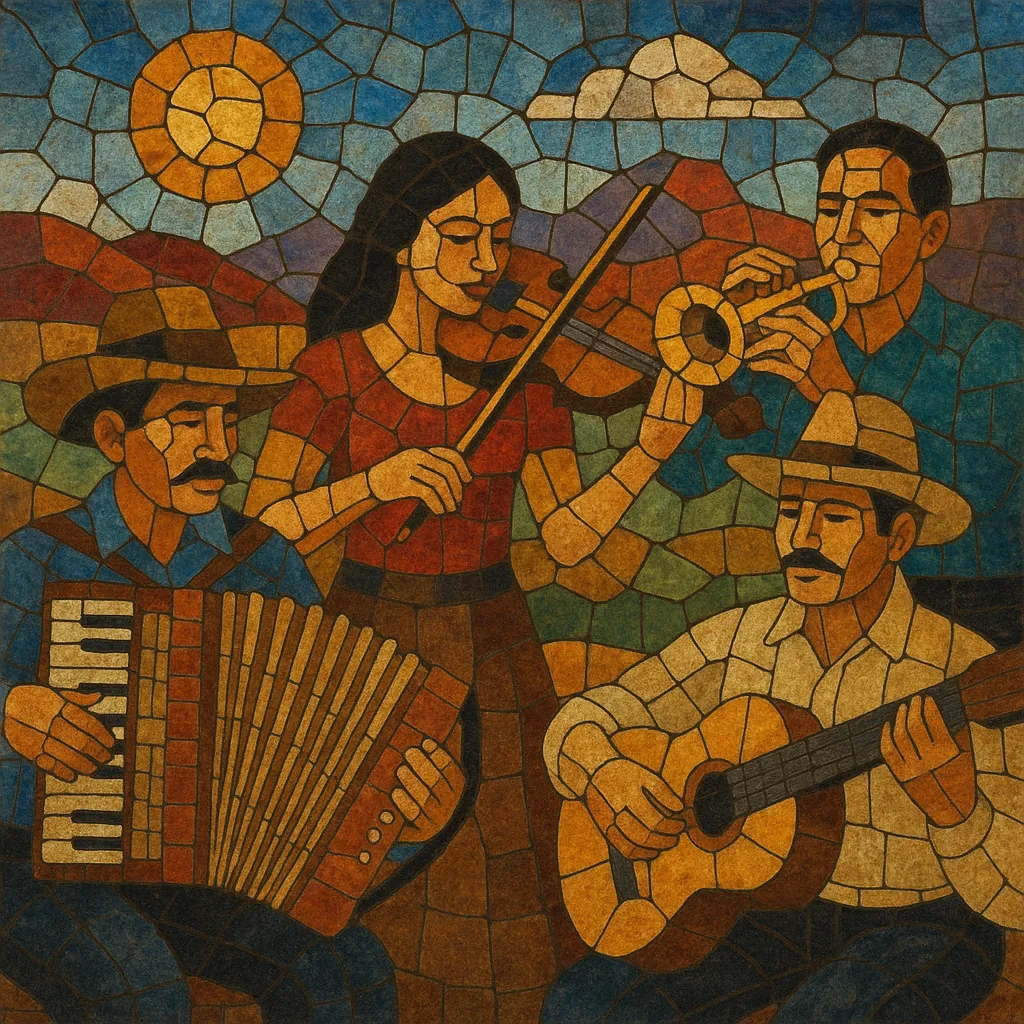
New Mexico music (música Nuevo Mexicana) is a regional Hispanic popular music from the U.S. state of New Mexico that blends traditional Spanish New Mexican folk with Mexican styles like ranchera, corrido, norteño, cumbia, and mariachi, and with Anglo-American genres such as country, rock and roll, and rhythm & blues.
Its signature sound often features bilingual Spanish–English lyrics, lively dance rhythms (polka two-step, cumbia, and waltz), and a mix of electric lead guitar, accordion or keyboards, bass, and drums, sometimes augmented by mariachi trumpets or violins. Melodies are direct and singable, harmonies favor major keys with simple I–IV–V progressions, and vocals draw on both ranchera belting and country phrasing.
The repertoire ranges from romantic rancheras and nostalgic waltzes to upbeat cumbias and polkas for fiestas, family gatherings, and community dances, making it a living bridge between New Mexico’s Hispano heritage and broader American popular music.
New Mexico’s Hispano communities maintained a local song tradition of alabados, inditas, romances, corridos, and dance pieces (polkas, varsovianas, and waltzes) brought by Spanish colonists and shaped by Mexican and Native influences. Fiddle, guitar, and later accordion accompanied village dances, while oral tradition preserved story-songs about local people and events.
Amplification, radio, and postwar dance culture catalyzed a distinct popular style. Artists such as Al Hurricane, Tiny Morrie, and their family ensembles fused ranchera and corrido forms with electric lead guitar, rock and roll backbeats, R&B inflections, and country two-step feels. Independent labels, regional radio shows, and community dances spread the sound throughout New Mexico and the U.S. Southwest.
The scene professionalized with tighter studio production, keyboards replacing or complementing accordion, and bilingual hooks designed for radio. Acts like Sparx, Lorenzo Antonio, Tobias Rene, Darren Cordova y Calor, and Roberto Griego expanded the audience with romantic ballads, cumbias, and polished rancheras. Festivals, Spanish-language radio, and family dynasties sustained continuity across generations.
Contemporary New Mexico music remains rooted in fiesta-ready polkas, cumbias, and waltzes while embracing modern pop and country touches. Younger performers retain bilingual storytelling and regional identity, and the genre continues to function as a cultural anchor for Hispano New Mexicans at weddings, fiestas, and community celebrations.

